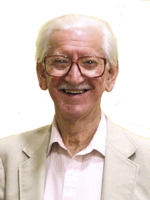
|
Folk Dance Federation of California, South, Inc.
|

|
CLICK AN IMAGE TO ENLARGE
Obviously it was the immigrants who brought the songs, music, and dances with them to America, but it was particularly the musicians who are to be credited. They came from the then-Austro-Hungarian Empire provinces of Croatia and Vojvodina, all rich in folklife, music, and dance. Of those areas it seems like most of the kolo dances came from Banat, one of the three provinces comprising Vojvodina, now the northernmost part of Serbia, bordering Romania.
About twenty-five kolo dances originally came with the major immigration from 1890 to about World War I, with the majority around the turn of the century. Some were danced in certain areas, others had popularity wherever the tamburitza orchestras played. Most seen included the ever-popular "Seljančica" and kolos "Zaplet," "Milica," "Čuješ mala," "Kokonješte," "Malo kolo," "Pleskavac," "Jeftanovićevo kolo," a "Drmeš," and "Žikino kolo." Cities such as New York and Akron and Lebanon, Ohio which have a large Banat presence have the largest repertoire, including the king of all kolos, "Veliko kolo." These are always played with tamburitza instruments.
Also there was no travel or cultural communication in between the two wars, therefore no "new" dances were being added to the repertoire. It was only after World War II that these dances began to arrive, mostly with non-ethnic folk dance leaders going to then-Yugoslavia to research and bring them back, notably Dick Crum and Dennis Boxell. As an example, for the first time we were exposed to the real Croatian dances! And here's the why:
These kolos were mostly native to Vojvodina and they spread everywhere; they were seen mostly at Serbian events. Croatian musicians were less inclined to play kolos (except "Seljančica") and it appears they did not bring the Croatian dances with them. At Croatian events they were happy with lots of polkas and waltzes and later some "modern" American dance tunes. But that all changed with the American-born generation which was more outgoing and mingled more in their world, including their peers of other ethnic backgrounds, our so-called "melting pot." Going to other events and being exposed to these kolos it was not long until these same kolos became their dances as well, Croatian dances. This holds to this very day! Some of these kolos were danced in the old country by both groups, but were not brought here as Croatian dances, except "Seljančica." Until recently there was much cross-over in attendance in Croatian and Serbian events; you could dance the drmeš at Serbian events and the signature Serbian dance, "Žikino kolo" at Croatian events. They didn't know and they didn't care. So they enjoyed them all. And most musicians played and still play everything. Musicians who played for both ethnic groups (and shop-keepers) were reluctant to show partiality, some even avoided revealing their background.
The latter part of the 1930s saw the beginning of the international folk dance movement, the participants being people of all backgrounds. It started with mostly couple dances of northern Europe. Chicago leader Vyts Beliajus and New York leader Michael Herman also sought out dances of other countries, including the kolos. Vyts formed the first Croatian dance group at this time. Kolos continued in the ethnic circles, the American-born generation now beginning to take over the reins from the immigrants. Kolos increased in popularity, particularly after World War II. But kolos had a slow start in the folk dance world, for example in the western states it was mostly couple dances and square dances. From a personal viewpoint it was an uphill battle promoting kolos until a younger crowd became enthused with them and formed a core which began to grow. And with the arrival of Dick Crum on the scene popularity began to escalate, with many new dances from Europe, a "new concept" someone called it. It was also the beginning of the general Balkan dances from other countries being introduced by Dick, Dennis, the writer, and other teachers, notably those from the Balkan countries. The picture today is that life continues in the ethnic communities as before with a large circle in the hall dancing kolos, but with a change. Other Balkan dances from the folk dance community are entering the repertoire and the musicians are learning the tunes. And folk dancing today means mostly Balkan dancing.
Used with permission of the author.